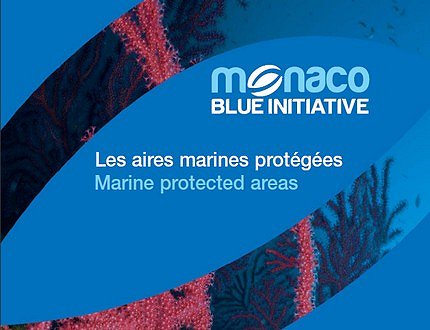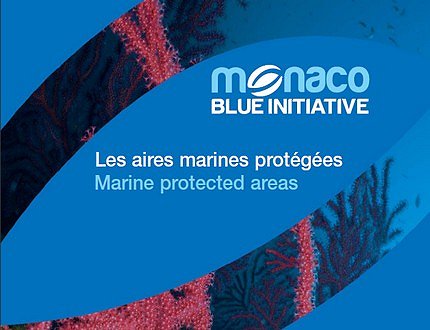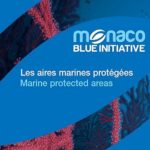How can we better protect marine biodiversity while developing its economic dimension? Nearly 80 international figures gathered on February 13 and 14, 2011, at the Oceanographic Museum of Monaco under the High Patronage of H.S.H. Prince Albert II of Monaco.

Among the expected personalities: government officials, scientists, business leaders, and civil society actors.
Notably: Nathalie Kosciusko-Morizet, Minister of Ecology, Sustainable Development, Transport, and Housing; José Maria Figueres, former President of Costa Rica; Jacqueline McGlade, Executive Director of the European Environment Agency – Denmark; as well as Sylvia Earle, Founder of Mission Blue Foundation, National Geographic, and Pierre-Yves Cousteau, President of Cousteau Divers.
The Objectives of the Monaco Blue Initiative II
• Pool the skills of scientific, political, and economic leaders and those responsible for Marine Protected Areas to promote coordinated and effective marine environment management.
• Marine Protected Areas and adjacent zones should no longer be approached solely from ecological criteria but also from the potential rent perspective that their sustainable exploitation could allow.
• The aim is to shift from a management focused on the conservation of species and habitats to one that also considers the conservation of natural mechanisms with economic interests.
• Marine Protected Areas could be the “backbone” of a broader and more integrated spatial management approach to the marine environment that considers all the services provided by marine ecosystems, whether economic, ecological, or social.
Message for a new vision of managing human activities
related to marine biodiversity
The oceans and seas are under severe pressure and harm, especially those resulting from their current mode of exploitation which, in the long run, threatens marine ecosystems and the living beings that inhabit them. Today, we face a major challenge of reconciling the protection of our seas and the vast resources they contain with their exploitation within the framework of sustainable and harmonious socio-economic development that respects natural balances. In this light, the implementation of truly appropriate management tools is now necessary to effectively protect marine environments.
Marine protected areas, the ecosystem-based approach to these spaces, and the currently implemented species conservation measures are essential instruments for the sustainable development of seas and oceans. But on their own, they are not sufficient to guarantee and achieve truly effective protection objectives. For example, while marine protected areas can control local anthropogenic pressures, they remain powerless against more global or diffuse pressures (such as climate change).
In response to this finding, the MBI members propose that MPAs be integrated into a broader approach and vision of spatial management of the marine environment that takes into account all the services provided by marine ecosystems, whether they are economic, ecological or social.
They propose to “rethink” the spatial management of human activities in relation to the marine and coastal environment. Conservation can be seen from the perspective of maintaining natural capital, and development from the perspective of the potential rent it can offer. For this, the establishment of new tools to evaluate this natural capital is essential.
They recommend that the very basis of the identification and delimitation of MPAs should not rely exclusively on scientific criteria but on a set of parameters that also incorporate the various sectors of activity developing or that can develop there. It involves extending a management focused on the conservation of species and habitats to one also based on the conservation of natural mechanisms, essential to the sustainability of socio-economic development.
Indeed, for these natural mechanisms to be preserved, human activities must be optimally managed. Some actors are negatively impacted, sometimes significantly, during the establishment of MPAs. Therefore, social measures are necessary, especially since the positive effects of management measures sometimes only become apparent in the long term or do not benefit the same actors. It is therefore crucial to compensate income losses even before the benefits of management can be perceived and to support these actors in developing income-generating activities without negative environmental impact.
They wish for the marine environment management adventure to be shared by all decision-makers and actors. It can no longer be constrained by sterile oppositions between conservationists and proponents of social development. The elements of natural capital – in the economic sense – are new dialogue and even compromise elements. They could lead economic circles to implement a reasoned and sustainable exploitation of these areas. The participation of all these actors in decision-making can only have beneficial effects on these marine areas. This is especially true in the transboundary context where growing aspirations for decentralization and regionalization open up new grounds for understanding and cooperation.
They consider that MPAs should be perceived as a central tool for planning activities both inside and outside their boundaries, in which economic actors play a major role in management based on ecosystems and the services they provide us.
In this context, while nothing excludes conservation as the primary motivation for managing a marine area, its value in terms of sustainable development must also be assessed by its outreach area for neighboring ecosystems. The most promising solution is to approach marine ecosystem conservation from a broader (geographically) and more integrated (economically) perspective.
They propose promoting dialogue between economic actors and MPA protagonists and/or managers. These partners would offer additional parameters for evaluating the capital of our marine areas. These new synergies among these various actors would allow launching a participatory process to develop new MPAs and support current ones.
This vision now resonates with the concerns, carried by the international community, national or local decision-makers, and the scientific community.
The champions commit to carrying the MBI message on the ground and at various events that will enable the synergy of social, economic, political, and scientific actors in the spatial management of human activities related to marine biodiversity.



